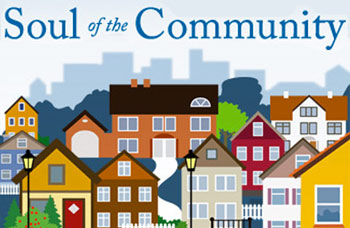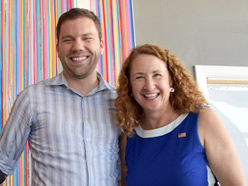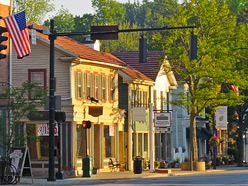Digital Placemaking is the Economic Strategy of the Future
Placemaking and investing in improving the resident experience has clear and measurable economic value.

Considering the "Soft" Factors of Economic Development
The first steps taken to improve local economic vitality are traditionally to review studies, statistics, and spreadsheets; but let's be honest, the data doesn't always tell us the whole story, let alone give actionable insights. The economic vitality of a community is comprised of other soft factors that simply aren't included in the pages of line graphs and pie charts. Specifically, how people feel about their neighborhoods.
Why is this oversight so significant? Because according to the findings of Dr. Katherine Loflin, dubbed the "City Doctor", there is a direct correlation between how people feel about their community and how economically strong that community is.
Dr. Loflin lead a study called Soul of the Community, which was conducted by Gallup in the 26 Knight Foundation communities across the United States to identify the factors that make people emotionally attached and committed to their community. There were many surprising characteristics that seemed to be consistent across all 26 communities and the 40,000+ people interviewed. Three of the top reasons people fall in love with their town are:
 Social Offerings
Social Offerings
There are things to do and places to go- Aesthetics
The beauty of the surroundings, both natural and man-made - Openness
The friendliness of the community, and the feeling of being welcome there
Watch the video at the end of this post to learn more about the Soul of the Community study and its findings.
The study shows that the more people love where they live, the more they naturally contribute to the vitality of their own local economy - in many cases, without even knowing it. For example, residents tend to become advocates for their community and will invite others to experience it. They are less likely to feel the need to leave town in order to have a good time, in turn spending more of their money locally. Equally as important, businesses within these communities tend to enjoy a happier and more productive workforce simply because their employees love where they live and work.
The findings from the Soul of the Community study show, on many levels, that when residents are loyal and attached to their community, countless micro economic touch points are triggered that snowball into vitality and growth.
"Community Attachment" as an Agenda Item
For many placemakers, the Soul of Community study opened many doors because it clearly illustrates that placemaking makes economic sense. I would expect to start seeing "Nurturing Our Residents Community Attachment" on the agenda for future economic development commission meetings across the nation.
This does not mean we hit the streets with clipboards and solicit volunteers to participate in a riverfront cleanup. It means there are economic reasons to work on improving the overall resident experience and community brand. Most excitingly, this can easily be done by leveraging the good that is already happening:
- Ensure neighborhood events and other social offerings are easy to find and well-promoted
- Make efforts to have local businesses feel appreciated and supported
- Create an open forum for residents to submit ideas that they think would make life better for them and their neighbors
- Establish a clear line of communication between elected officials and those they represent
Placemaking does not require an expensive overhaul across municipal departments, nor does it require months of planning and cutting through red tape. Approaching economic growth through placemaking often yields same-year results making it easy to measure and justify further support. Since the unique personality of a community is the main driver of placemaking efforts, the end results are more genuine and applicable. This keeps the campaign sustainable and eventually creates a trend of community-wide attachment for residents to their town.



